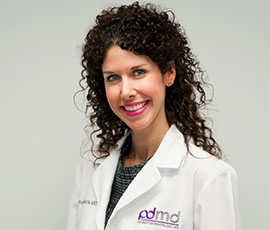Are you tired...?
Finally, with any skin condition, taking care of your overall health is essential. Sleeping a full eight hours, eating a healthy diet rich in antioxidants (green tea, vitamin C, vitamin E, resveratrol, acai, blackberry, etc), exercise, and stress relieving activities (yoga, breathing) are vital to a youthful, energized, beautiful, you!
Beautiful Girls
Halle Berry. Michelle Pfeifer. Megan Fox. Chances are, when you hear these names, you think of the word beauty. But what makes us label these women as beautiful? Many people will say that symmetry is what makes people look beautiful. To a certain extent, this is true. Our eye is automatically drawn to what is abnormal, or "stands out" on someone's face. An imperfection or asymmetry on one side of the face is often considered less appealing. Think of Austin Powers, where Mike Myers can't stop focusing on the "moley moley moley mole." Or when you have a large pimple on your face and you feel like everyone in the world is staring right at it. But symmetry is not the whole answer. If you cut a photo of someone's face in half and superimpose one half on the other, you'll see that even the most "beautiful" people's faces are not perfectly symmetric. Conversely, if you computer generate a person with both sides of their face in perfect symmetry, they actually just look...wierd.
Often we consider certain features to be more attractive. High cheekbones, wide eyes, full lips, white, even teeth. But what about people whose features don't conform to that? Think of Lauren Hutton's gap in her top teeth, or Angelina Jolie's large lips, or Brooke Shield's thick, heavy eyebrows. All considered beautiful women.
So what else? Proportion plays a large role in shaping our perception of beauty. Dr. Stephen Marquardt talks about the "Golden Ratio," a certain proportion found in nature (1.618:1) that describes the proportions seen in the ideal, or beautiful face. He says that this ratio is constant in beautiful faces, regardless of culture, race, or era. The distance between the eyes, between the nose and the upper lip, and the size of the upper lip to the lower lip have all been measured and described as what is the "ideal" distance.
I personally think that the concept of beauty is too complicated to explain with a single number, or a single answer. I think it's a combination of facial symmetry, facial volume, proportion of features, shape of individual features, clarity and texture of skin and hair, brights of the eyes, etc. And one important feature that can't be changed with botox, fillers, lasers, or peels: personality!
Categories
- November 2014 (1)
- December 2014 (3)
- January 2015 (4)
- February 2015 (3)
- March 2015 (1)
- April 2015 (3)
- May 2015 (4)
- June 2015 (2)
- July 2015 (0)
- August 2015 (1)
- September 2015 (2)
- October 2015 (4)
- November 2015 (1)
- December 2015 (1)
- January 2016 (2)
- February 2016 (1)
- March 2016 (3)
- April 2016 (2)
- May 2016 (1)
- June 2016 (1)
- August 2016 (1)
- October 2016 (1)
- January 2017 (1)
- February 2017 (1)
- June 2017 (1)
- August 2017 (1)
- October 2017 (1)
- December 2017 (1)
- April 2018 (1)
- May 2018 (1)
- November 2018 (1)
- May 2019 (1)
- July 2019 (1)
- January 2020 (1)
- March 2020 (2)
- July 2020 (1)
- November 2020 (0)
- January 2021 (1)
- October 2021 (1)
- January 2022 (1)
- June 2022 (1)
- November 2022 (1)
- April 2023 (1)
- September 2023 (1)
- September 2023 (1)
- December 2023 (1)
- February 2024 (1)
- July 2024 (1)
- September 2024 (1)
- March 2025 (1)
- October 2025 (1)
Archives
Latest on blog
The fountain of youth: collagen!
Published September 30th, 2025These days, everyone is searching for the elusive Fountain of Youth. But dermatologists know what...
Learn More
